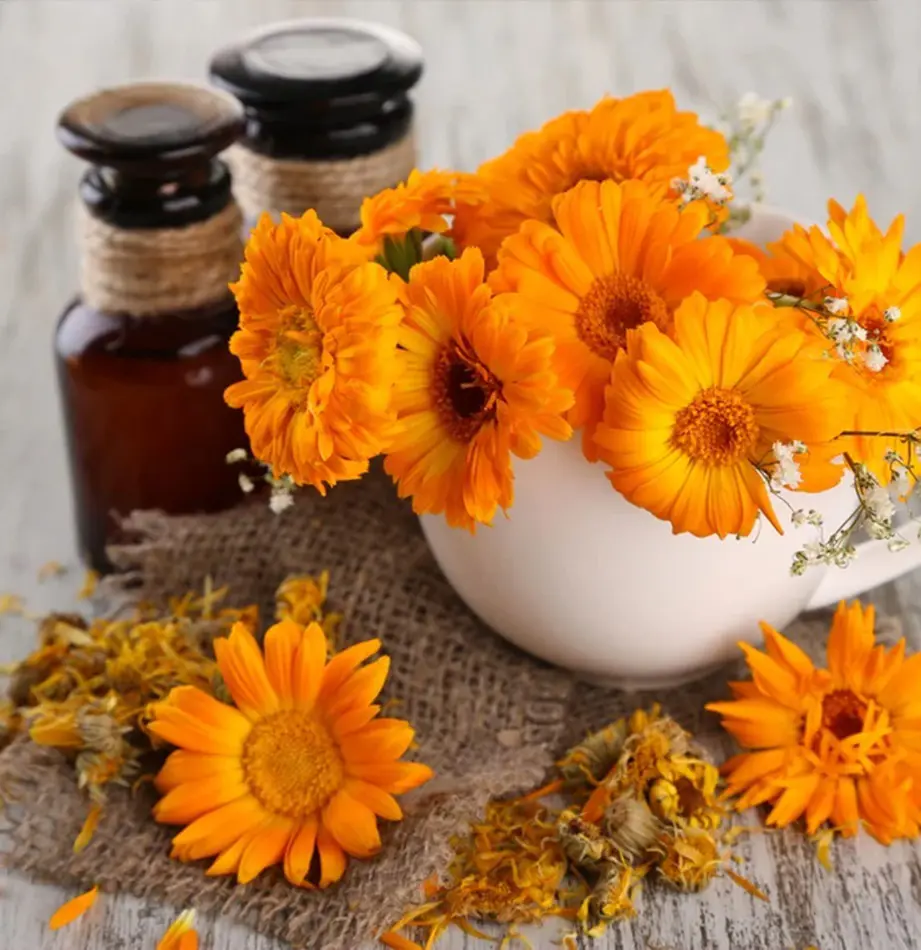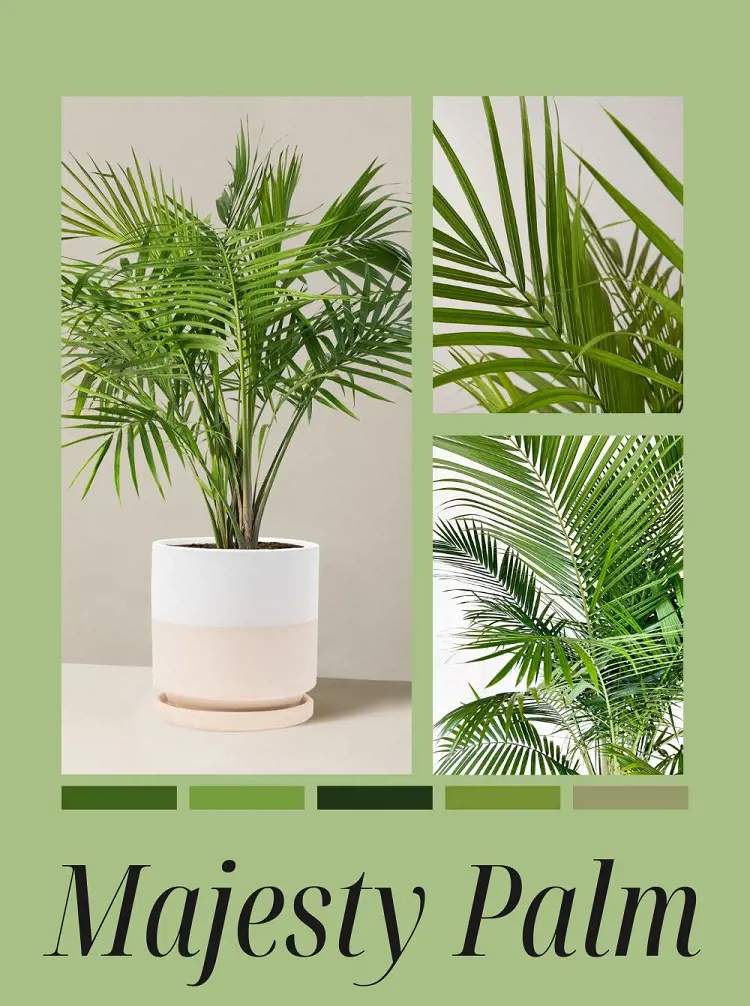How To Care For Hoya Plant
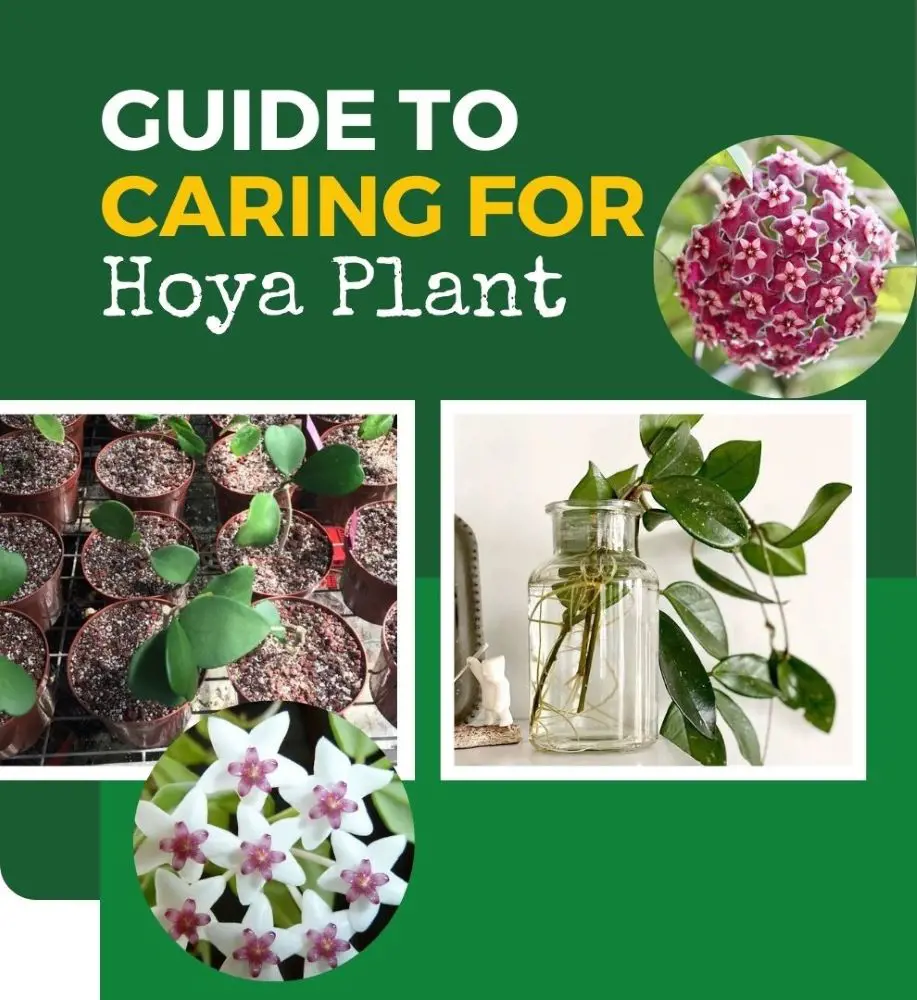
This post may contain affiliate links. If you make a purchase through links on our site, we may earn a commission.
Adding a Hoya plant to your home not only enhances its aesthetic appeal but also offers numerous health benefits. These charming plants with their vibrant foliage and delicate flowers can elevate any space by creating a serene and inviting atmosphere.
To ensure your Hoya thrives, proper care is essential. This includes providing adequate sunlight, watering, using well-draining soil, and giving sufficient nutrients. In our detailed report, we will delve into these care practices and provide valuable insights to help you nurture your Hoya plant to perfection.
What Is A Hoya Plant?
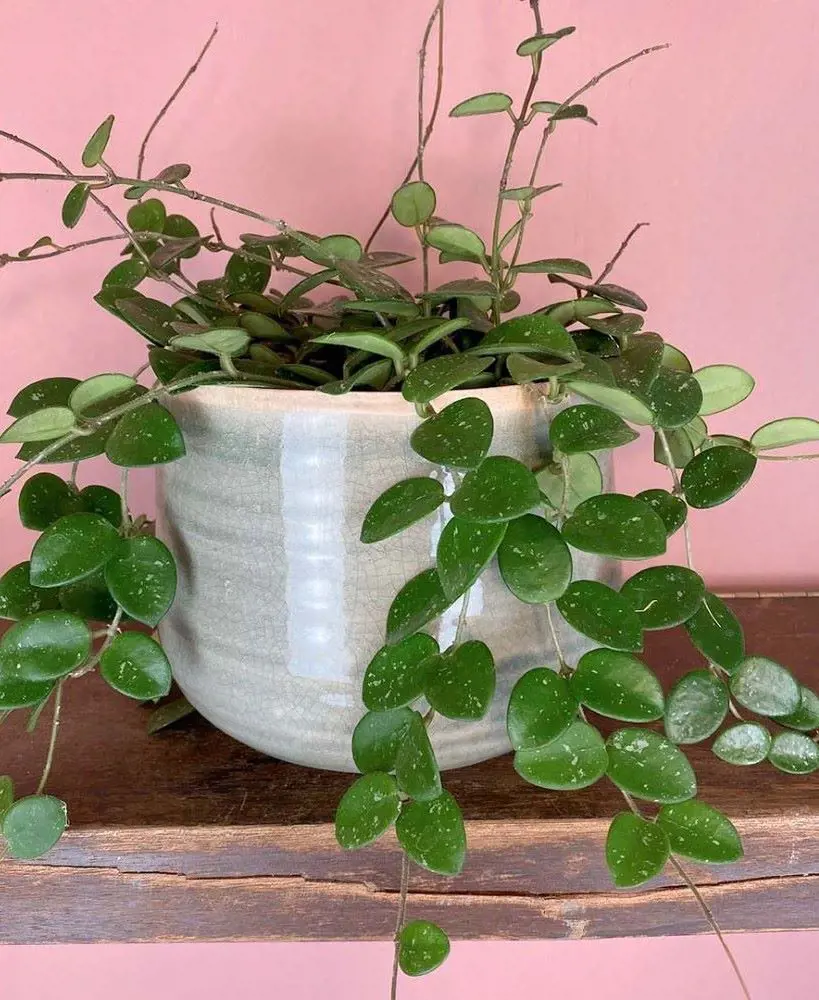
The Hoya plant, part of the Apocynaceae family, is a genus comprising over 200 species of tropical vines and shrubs. Commonly known as wax plants or porcelain flowers, this plant originated from Asia and Australia.
Hoya plants feature thick, succulent leaves and unique growth habits, including trailing or climbing vines. They thrive in bright, indirect light and require well-draining soil. Cultivated as houseplants, Hoya plants are cherished for their ornamental value and ease of care.
Hoya Plant Types
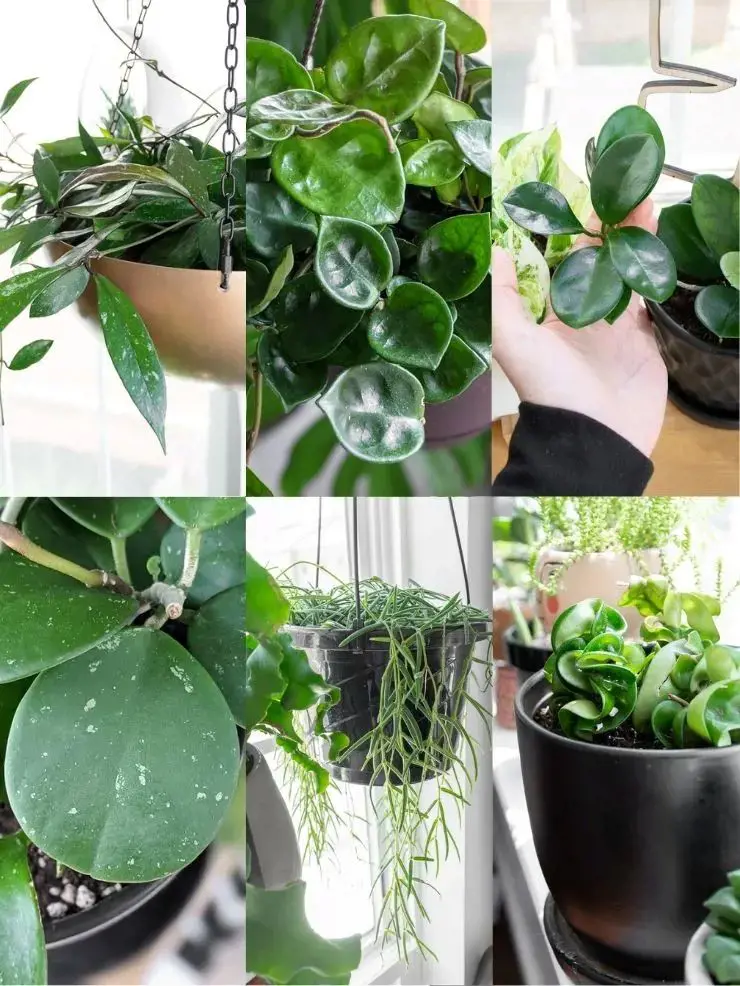
The Hoya is a diverse plant with multiple variations. In nature, we can find nearly 40 to 50 different types of Hoyas.
Here are a few popular types of Hoya plants in existence today:
- Hoya Carnosa: Commonly known as the Wax Plant, it features thick, waxy leaves and clusters of star-shaped flowers with a sweet scent. This popular variety is easy to care for and comes in several cultivars, including the 'Compacta' and 'Tricolor' with variegated leaves.
- Hoya Kerrii: Also called the Sweetheart plant, it has heart-shaped leaves and is often gifted as a symbol of love and affection. It thrives in bright, indirect light and requires minimal maintenance, making it a favorite among plant enthusiasts.
- Hoya Pubicalyx: This variety is known for its vibrant foliage and prolific blooming habit. It produces clusters of flowers in shades of pink, red, or purple, adding a splash of color to any indoor garden. With proper care, it can reward growers with abundant blooms throughout the year.
- Hoya Obovata: Featuring large, ovate-shaped leaves, this Hoya variety is prized for its attractive foliage. It prefers bright, indirect light and regular watering to thrive. With its glossy leaves and occasional clusters of white flowers, it adds elegance to any indoor space.
- Hoya Polyneura: Known as the Fish Tail Hoya, it stands out for its unique leaf shape resembling a fish's tail. This variety requires bright, indirect light and moderate humidity to flourish. Its intricate foliage makes it a fascinating addition to any plant collection.
Hoya Plant Parts
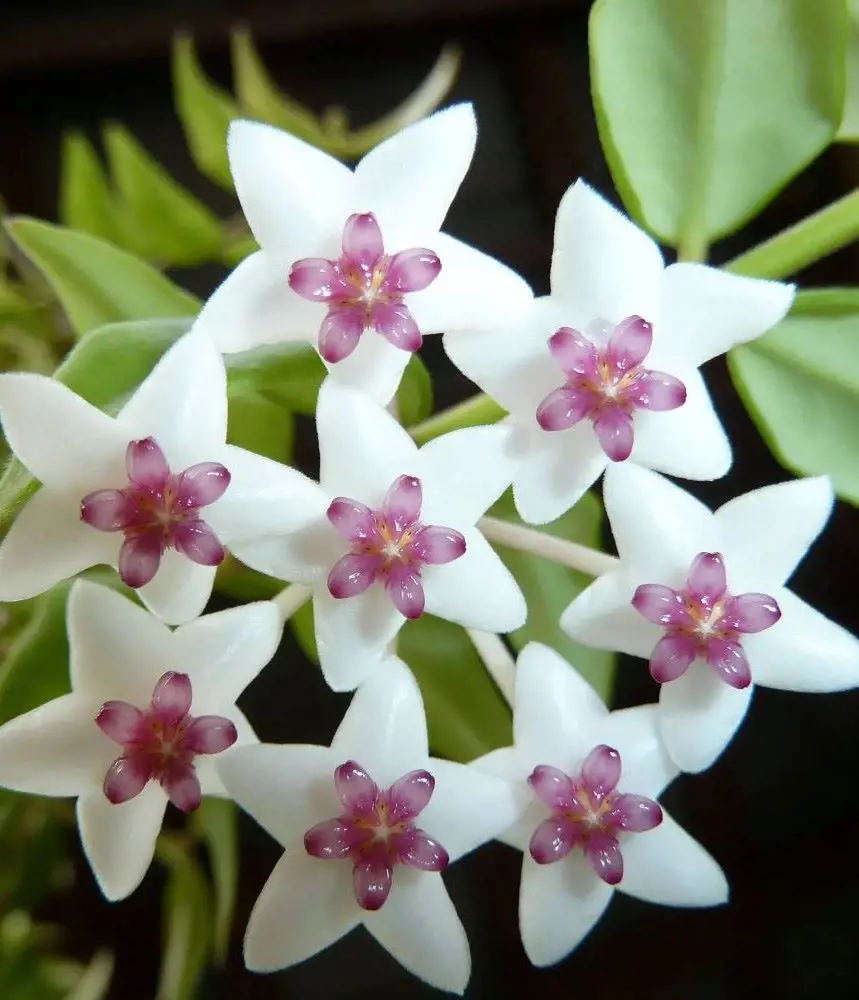
The Hoya plant can be divided into five major parts, including leaves, stems, flowers, roots, and inflorescence.
- Leaves: Hoya bella plants have simple leaves arranged oppositely along the stems. These evergreen leaves come in various shapes and sizes, from ovate to nearly oval, and play a crucial role in photosynthesis and transpiration.
- Stems: The semi-woody stems of the Hoya plant serve as the framework for its growth. They provide structural support for the plant and serve as conduits for water, nutrients, and sugars throughout the plant.
- Flowers: Hoya flowers are composed of three main parts: the corolla, the corona, and the calyx. The corolla, or petals, is the most prominent part and comes in various colors and shapes. The flowers typically develop in clusters and emit a pleasant fragrance.
- Roots: Hoya plants have roots that anchor them in the soil and absorb water and nutrients. These roots may develop aerial roots as well, which help the plant cling to supports such as trees or trellises.
- Inflorescence: The inflorescence of the Hoya plant refers to the arrangement of its flowers on the stem. Hoya inflorescences can vary, with some species producing compact clusters of flowers, while others have more loosely arranged blooms.
How To Care For Hoya Plant?
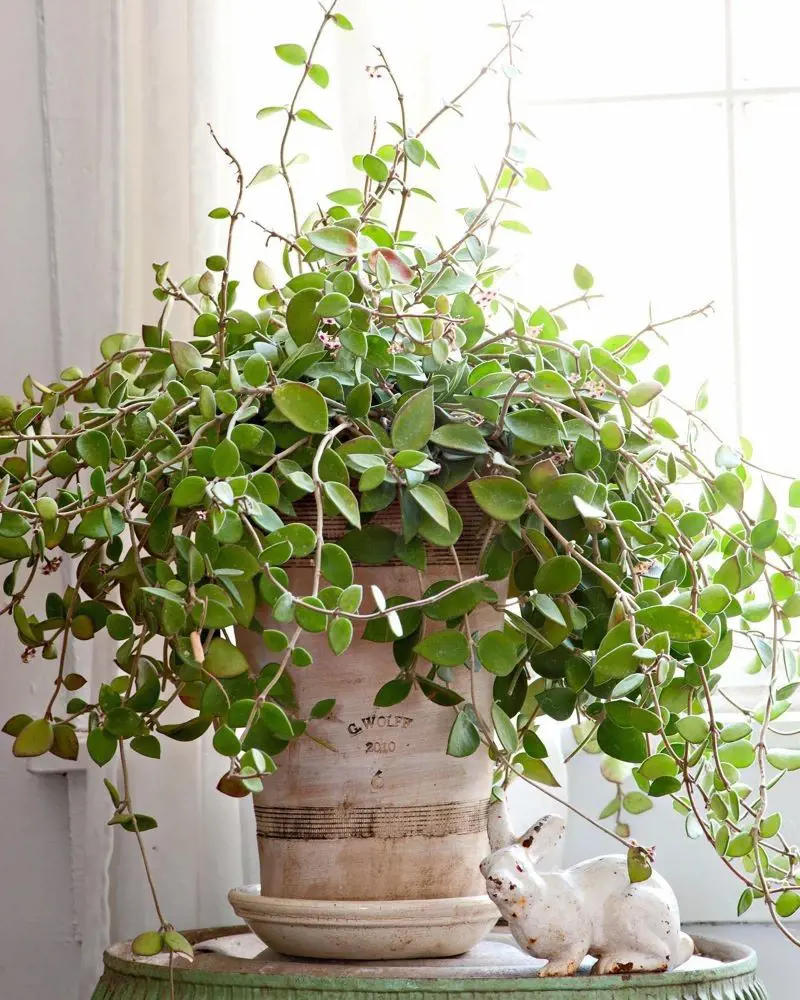
While there are around 50 different varieties of the Hoya plant, the process of caring is pretty much the same. These plants can thrive in a suitable environment with sufficient sunlight where their water and nutritional requirements are met:
1. Lighting Requirement
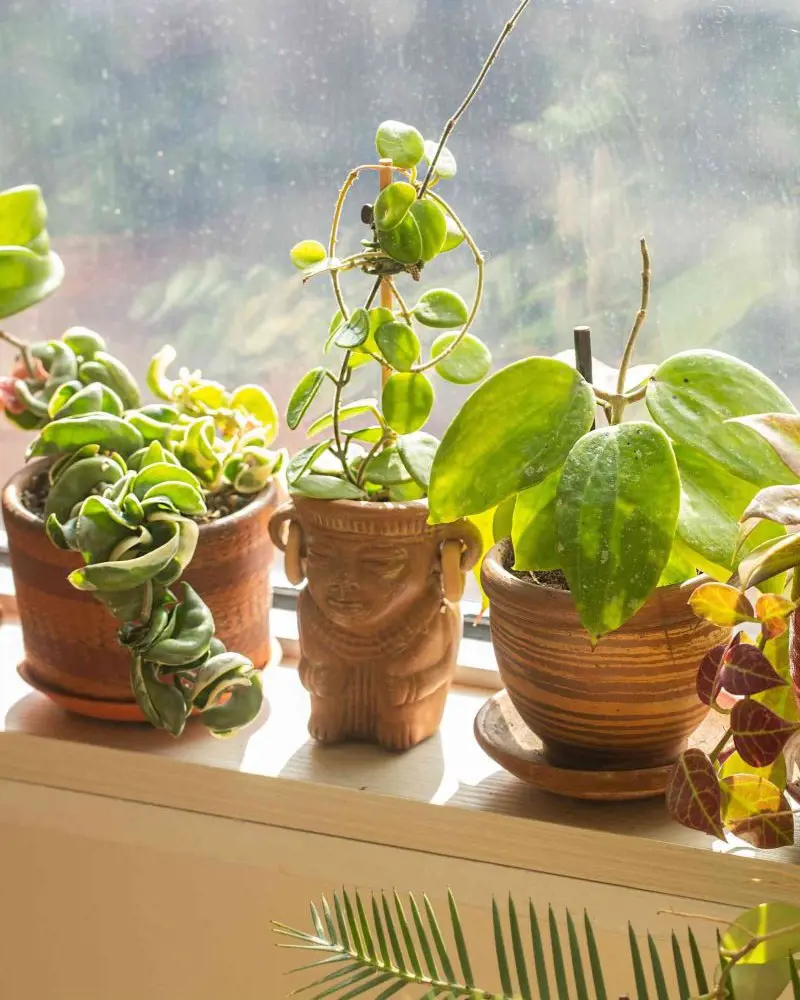
Provide sufficient bright, indirect sunlight to the Hoya plant. Although some can tolerate a few hours of direct sunlight, particularly in the morning or evening, prolonged exposure to intense sunlight can lead to leaf damage like scorching or yellowing.
Indoors, near east- or west-facing windows, or outdoors under a tree canopy are ideal. Also, ensure the area has good air circulation and moderate humidity to support healthy growth.
2. Watering The Plant
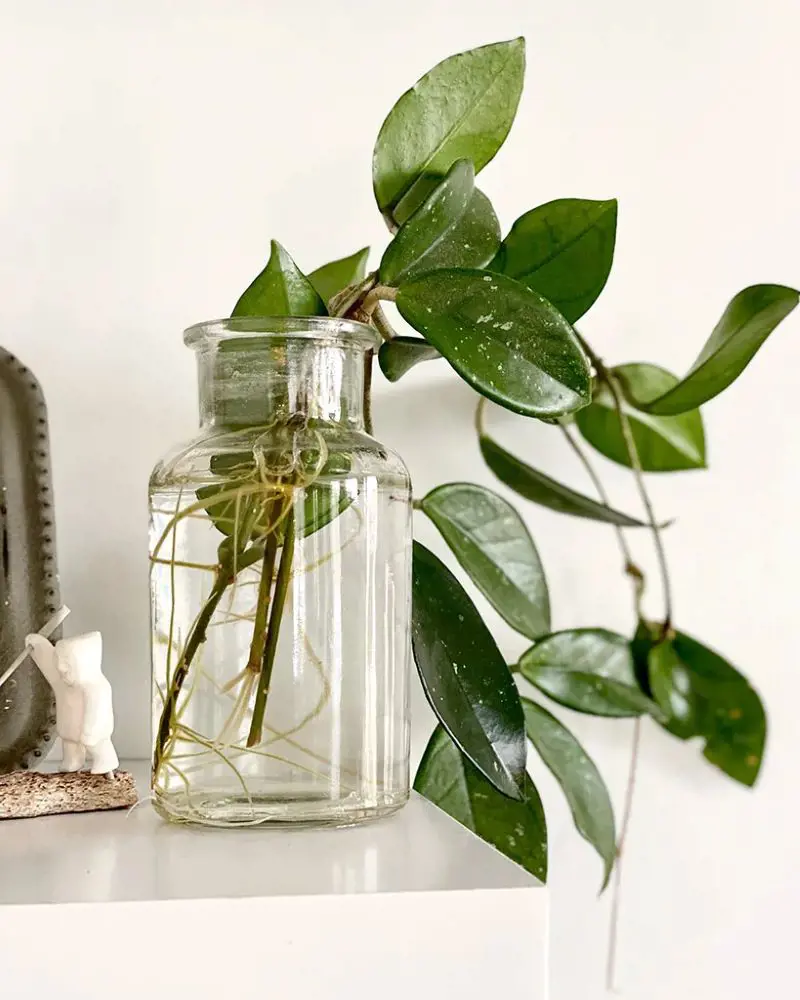
Water is crucial for the survival of Hoya plants as it provides consistent moisture for the healthy growth of the plant. While they can tolerate short periods of drought due to their water-storing capability, regular watering ensures their overall well-being and encourages blooming.
Like water deficiency, overwatering can also cause harm to the plant. Here's what you should consider while watering your Hoya.
Watering Frequency
During spring and summer when growth is active and temperatures are higher, water every 7-14 days. You should adjust based on humidity levels and pot size. Similarly, in fall and winter, reduce watering to every 14-21 days or when the soil is dry to the touch.
Temperature fluctuations influence water needs; higher temperatures increase water requirements, while cooler temperatures decrease them. Monitor plant condition and soil moisture, adjusting watering accordingly to maintain optimal health.
Water Quality
Use non-chlorinated water to feed these plants. Rainwater or filtered water is preferable to tap water, as chlorine and fluoride can harm the plant.
Additionally, avoiding hard water with high mineral content prevents salt buildup in the soil, which can damage roots. While using wastewater is possible, it's not recommended due to potential contaminants and chemicals that may harm the plant's health.
Water Temperature
The room temperature, around 68-78°F (20-25°C), is considered the ideal water temperature to feed the Hoya plant. Water that is too hot can shock the plant's roots, leading to stress, wilting, and potentially root damage.
Conversely, cold water can also cause shock and stress, inhibiting nutrient uptake and growth. Extreme temperatures can disrupt the plant's metabolic processes.
3. Use Nutrient-Rich Soil
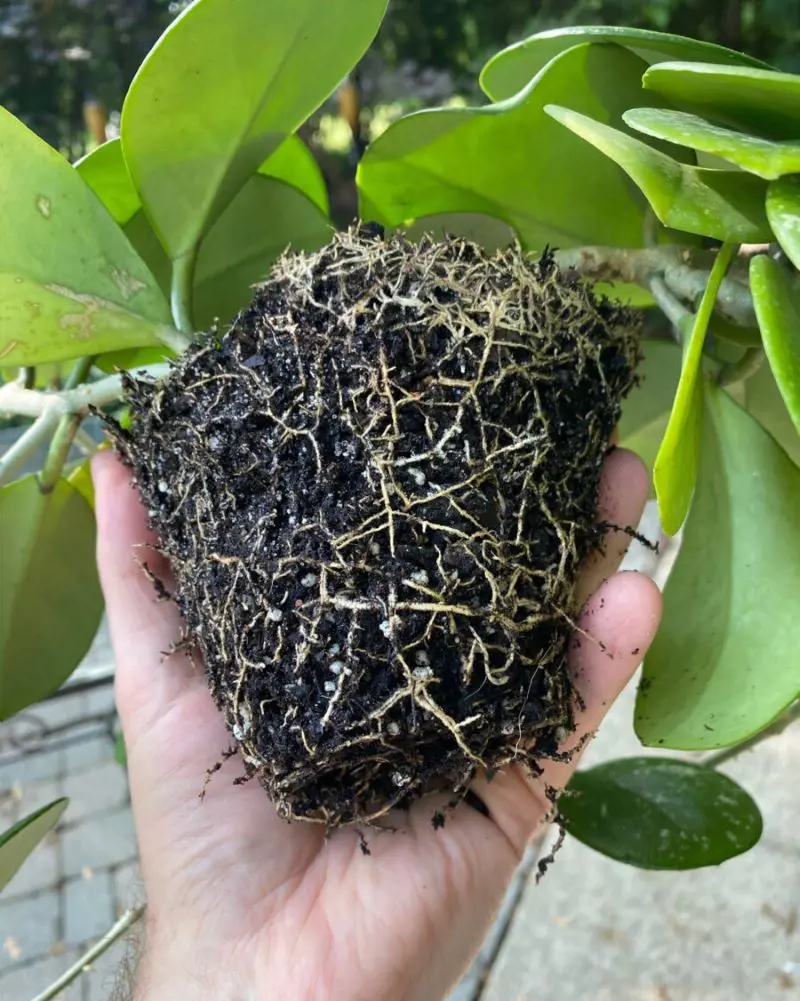
Provide well-draining soil that provides good air circulation to the roots. Ideal soil mixtures include peat-based soil, orchid bark mix, cactus mix, or a blend of vermiculite and perlite.
These soil types prevent waterlogging, which can cause root rot, while still retaining sufficient moisture for the plant's needs. Moreover, these plants thrive in soil that allows excess water to escape quickly, preventing root rot, as they do not tolerate soggy conditions.
4. Provide The Ideal Temperature
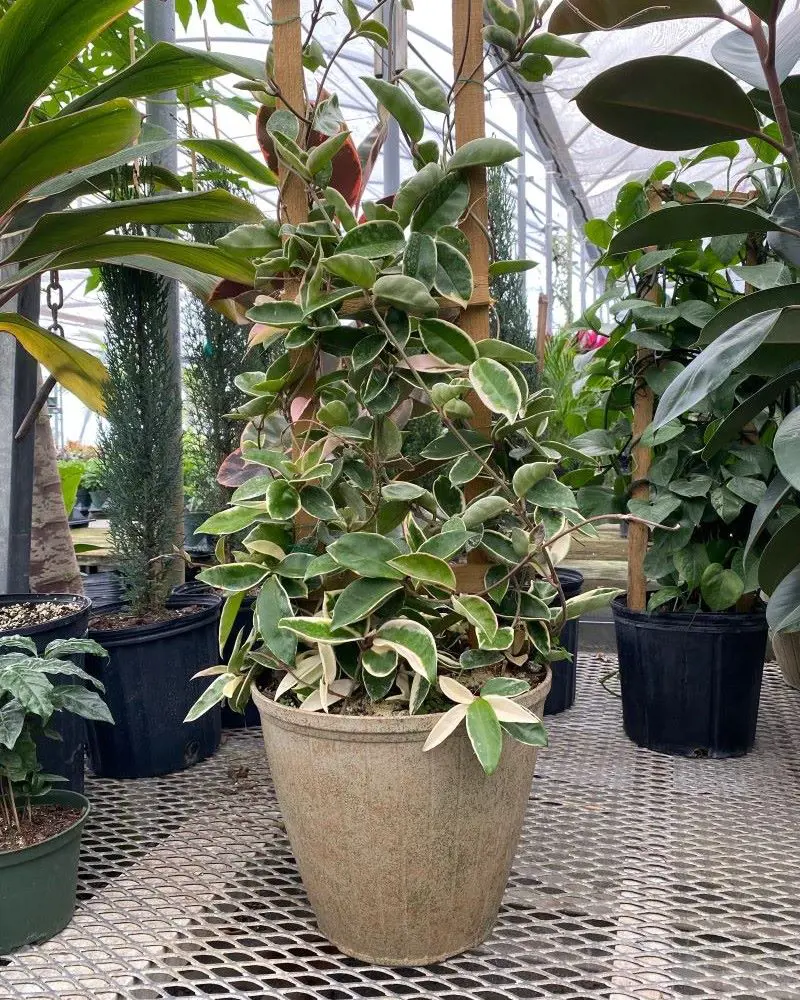
The Hoya plant can adjust well to temperatures between 65°F to 85°F (18°C to 29°C), with cooler nights being acceptable. Consistent temperatures within this range prevent stress and support healthy growth and flowering.
On the other hand, extreme temperatures, particularly above 95°F (35°C), can cause distress and adversely affect the plant's health.
5. Humidity Requirement
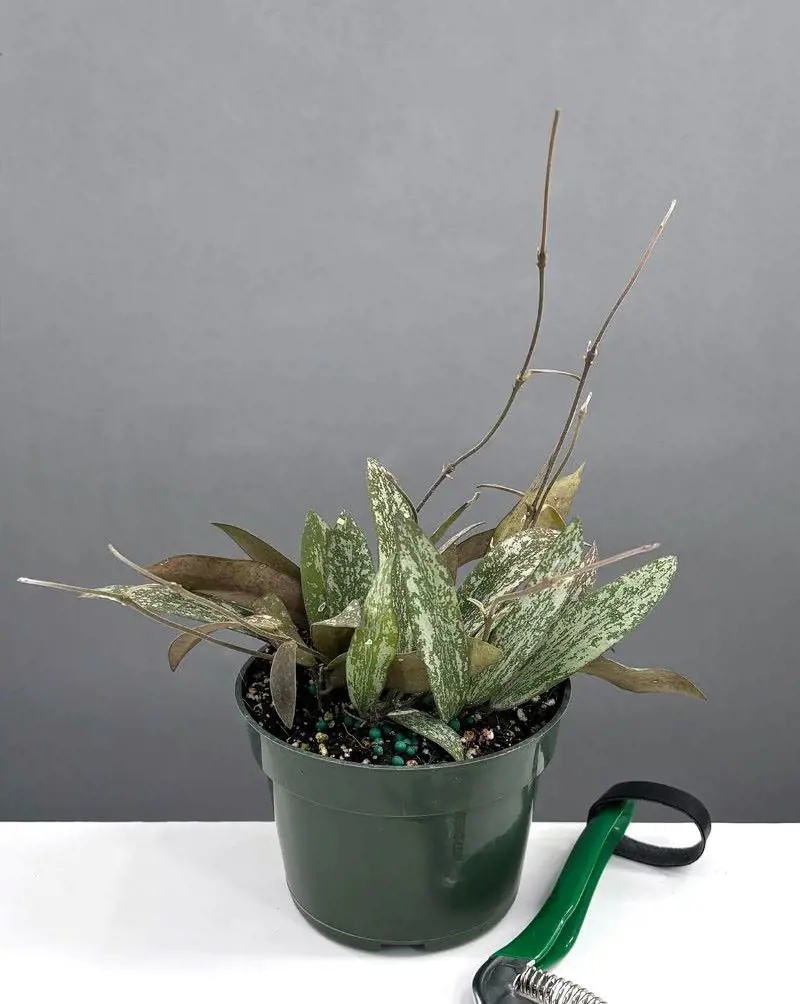
The ideal humidity for Hoya plants to thrive ranges between 50% and 60%. Higher humidity levels, around 60% to 70%, are beneficial but not necessary.
Hoyas can also tolerate lower humidity levels, down to around 40%, with proper care.
6. Prune Overgrown Parts
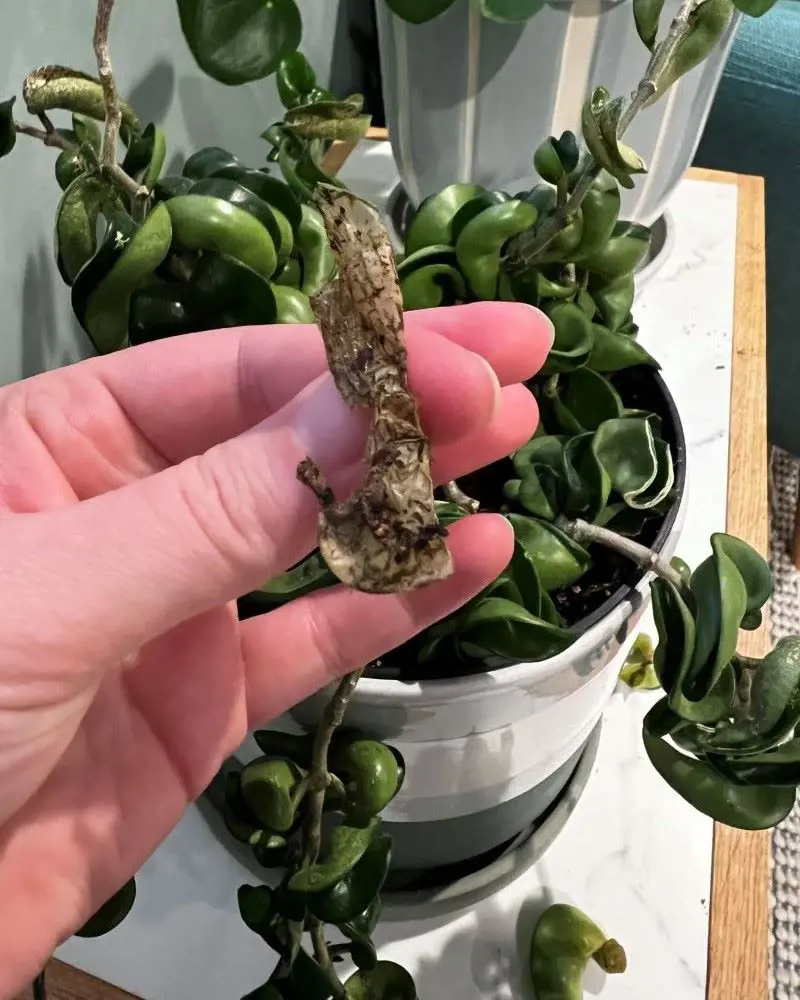
Pruning is the process of selectively trimming or cutting parts of a plant to maintain its health, shape, and encourage new growth. This task helps remove any damaged or diseased part of a plant.
Here's a step-by-step guide on the process of pruning the Hoya plant:
- Identify damaged or diseased parts: Inspect the plant for any dead, damaged, or diseased stems or leaves.
- Use clean, sharp tools: Use sterilized pruning shears or scissors to avoid spreading infections.
- Trim dead or yellowing leaves: Remove any dead or yellowing leaves to improve the plant's appearance and prevent disease spread.
- Cut back overgrown stems: Trim back long or leggy stems to encourage bushier growth and maintain the plant's shape.
- Prune after flowering: Trim back spent flower stalks to promote new blooms and prevent seed formation, which can drain the plant's energy.
- Avoid excessive pruning: Hoya plants are resilient and generally require minimal pruning. Only prune as needed to maintain the plant's health and aesthetics.
7. Propagate From Stem Cutting
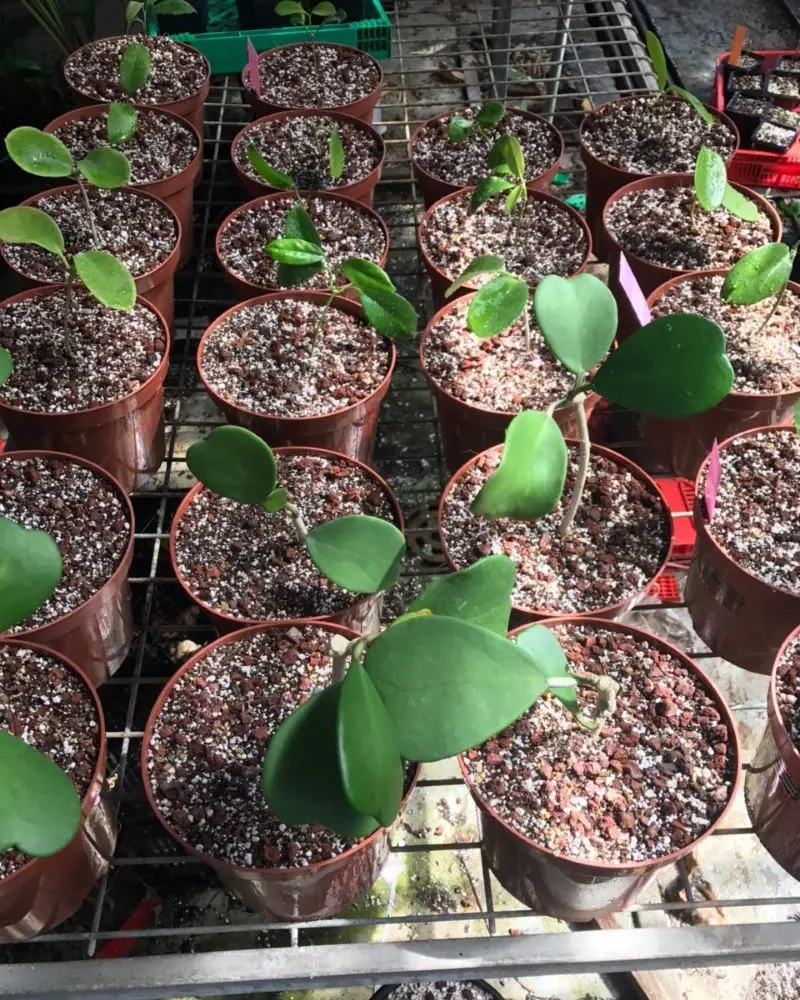
Propagation in Hoyas refers to the process of creating new plants from existing ones, typically involving seeds, cuttings, or other plant parts. It's a common method for expanding plant collections or replacing aging specimens.
Here's the process of propagating the Hoya plant:
- Choose a healthy stem: Select a stem with at least 6 inches in length and 3-4 leaves.
- Take a cutting: Cut the stem just below a leaf node using clean, sharp scissors or pruning shears.
- Remove flowers: To divert energy towards rooting, remove any flowers from the stem.
- Prepare the cutting: Trim the cutting just below a leaf node, ensuring it has several nodes and leaves.
- Plant the cutting: Place the cutting in a well-draining potting mix, burying at least one node beneath the soil.
- Provide proper care: Keep the cutting in a warm, humid environment with indirect sunlight and maintain consistent moisture levels.
- Root development: Roots typically develop within a few weeks, indicating successful propagation.
- Transplanting: Once roots are well-established, transplant the cutting into a larger pot if needed, and continue regular care.
8. Provide Support Structure

Support structures such as trellises, moss poles, or stakes are essential for climbing Hoya plants.
As they grow, these plants produce long trailing vines that require support to prevent them from trailing on the ground.
9. Nutritional Requirement
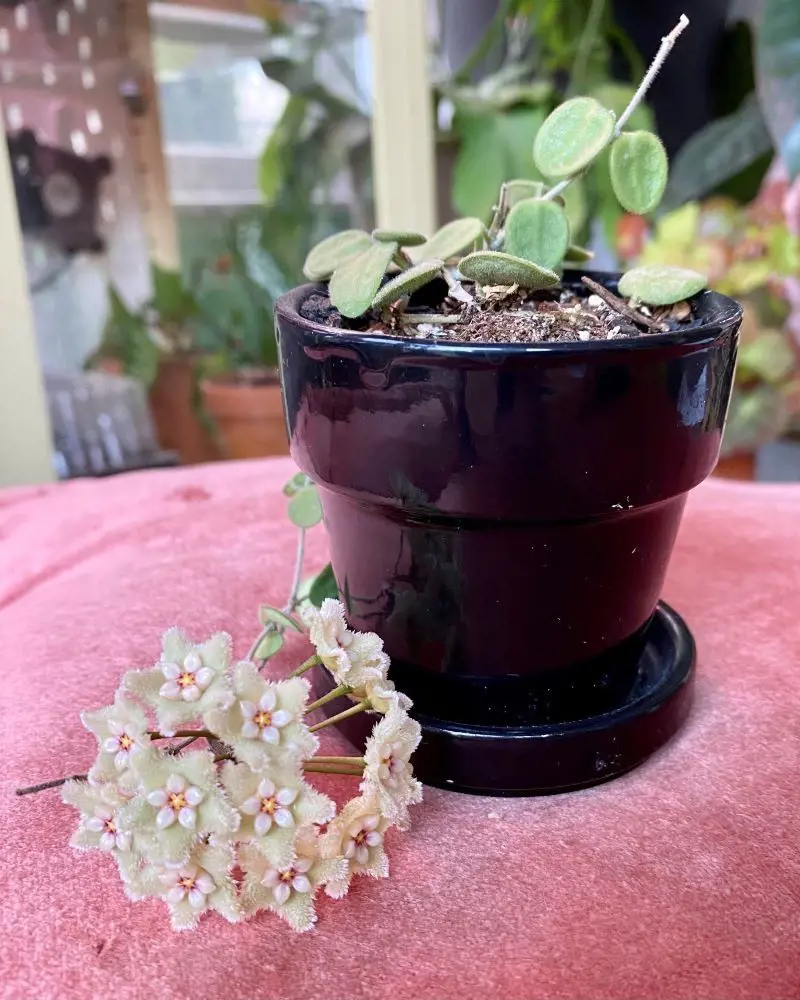
Feed a balanced, diluted fertilizer solution every 2-4 weeks during the growing season, typically in spring and summer.
Choose a fertilizer specifically formulated for houseplants, enriched with essential nutrients like nitrogen, phosphorus, and potassium.
Hoya Carnosa Care
Proper Hoya Carnosa care involves attention to light, water, soil, and temperature. Place it in bright, indirect light, ensuring it receives some direct sunlight but not too much to avoid scorching.
Water sparingly, allowing the soil to partially dry between waterings, especially in winter when it's dormant. Also, use well-draining soil to prevent waterlogging, and consider a pot with drainage holes to avoid root rot.
Prune occasionally to shape the plant and remove dead or leggy growth. Additionally, propagate by stem cuttings in spring or summer for more plants.
How To Grow Hoya?
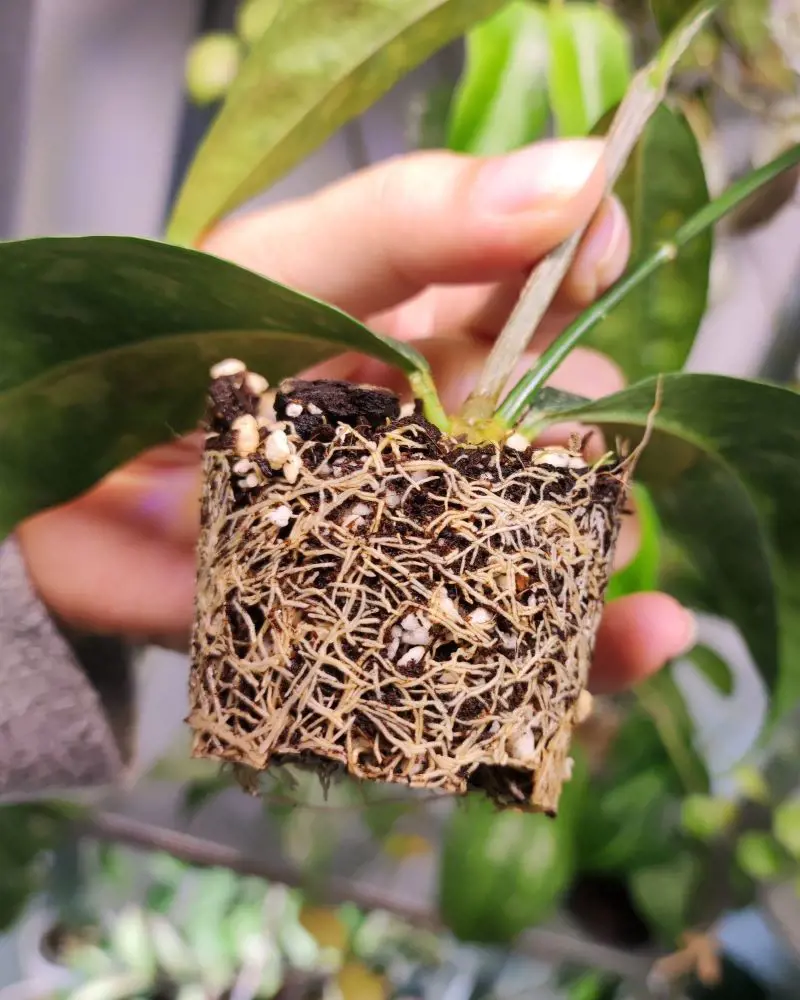
This step-by-step guide will help you grow the Hoya plant along with providing info on where, when, and under what conditions to plant it.
- Choose a suitable pot: The pot should be slightly larger than the plant, typically about 1-2 inches larger in diameter. It should have drainage holes to prevent waterlogging. Terracotta pots are favored for their ability to allow the soil to dry out faster.
- Select the right soil: Use well-draining and slightly acidic soil to grow your Hoya plant. A mix of regular potting soil and succulent potting mix in equal parts provides the ideal balance of moisture retention and drainage.
- Plant the Hoya: Planting is one of the most important steps in growing the Hoya plant. Using the right process is beneficial for the overall growth and well-being of the plant.
- Place the plant in indirect sunlight: Use a spot with access to bright, indirect sunlight to place the pot. Avoid placing it in direct sunlight to prevent leaf scorching or discoloration.
- Use appropriate fertilizers: These plants benefit from balanced liquid fertilizers with a higher phosphorus content, such as a 10-30-10 or 7-9-5 formula. Fertilize every two to four weeks during the active growing season, typically from spring to late summer.
Common Issues With Hoya Plant
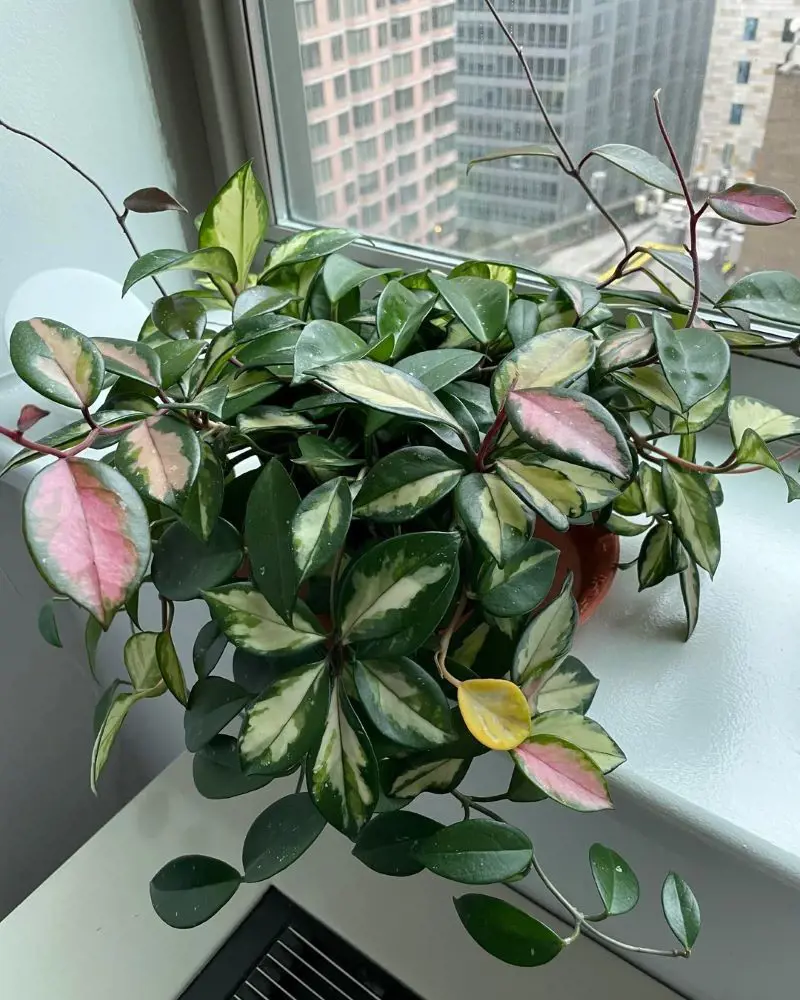
Take a look at some of the common health and environment issues that can hamper the natural growth of the Hoya plant.
- Leaves turning brown: Brown leaves can indicate excessive heat and low humidity. To solve this, move the plant to a cooler location with higher humidity levels, and avoid direct sunlight.
- Wilting of leaves: Wilting leaves may result from overwatering or underwatering. Adjust the watering schedule accordingly, ensuring the soil is neither too dry nor waterlogged.
- Falling leaves: Leaf drop can occur due to overwatering, underwatering, low humidity, or nutrient deficiencies. Address the underlying cause by adjusting watering, increasing humidity, and providing appropriate fertilization.
- Lack of flowering: Insufficient light or incorrect temperature conditions can hinder flowering. Ensure the plant receives adequate indirect sunlight and maintain a consistent temperature to encourage blooming.
- Pest infestations: Common pests like aphids, mealybugs, spider mites, and thrips can affect Hoya plants. Use insecticidal soap or neem oil to control pests, and regularly inspect the plant for early signs of infestation.
Recent posts
Plant Care
Plant Care
10 Calendula Health Benefits and Possible Side Effects
[image-1] Commonly used in medicinal preparations in several medicine systems, calendula is an annual herb in the daisy family (Asteraceae) originating from southern Europe and the Eastern Mediterranean area. It is suitable for borders, beds cut flow...
Plant Care
How To Plant, Grow and Care Majesty Palm
The majestic palm, scientifically known as Ravenea rivularis, makes for a stunning indoor tree with its lush and grand fronds. Originating from Madagascar's river banks, this resilient houseplant is cherished not only for its beauty but also for its ...
